Kling AI Review (2025): Incredible Quality, But With A Catch
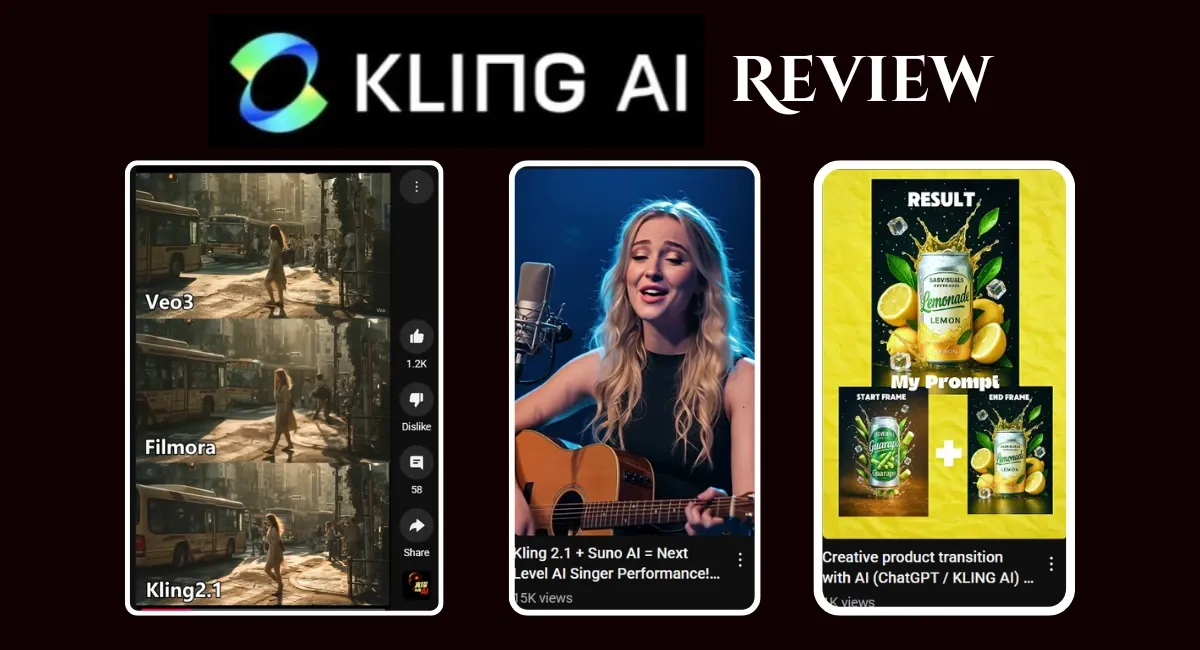
"Kling AI is so good at video generation, you'll regret not using it."
This is what my freelancer buddy was constantly telling me. Every time he said that, he'd follow it up with, "Man, I just closed another client for video ads, and they're paying me $1500 per project."
I already knew he was using Kling AI and other AI video tools to generate these ads for his clients, which is why he was able to handle so many clients at such high rates.
When I first saw the video ads generated by Kling AI on his computer… I was like, this is crazy. The quality was insane. Then I started regretting buying another tool 'Syllaby AI' that was, frankly, pretty crap.
But before I jump into buying something new, I always do in-depth research to make sure it's the right tool for me. So, I talked to my freelancer buddy, got access to Kling AI for a bit, and did a ton of research to write this post. I want to show you what I actually found.
This tool may have created a lot of hype… and it definitely should have, because it's a really versatile tool. But it also comes with a lot of good and bad things, which I'm going to discuss. This is the fifth AI video generator I've used this year after VideoExpress AI, Invideo AI, and Veo 3.
After using them all, I want to share my honest findings. In this post, I'm going to cover everything you're looking for on the internet. So let’s start reading together.
So, What Exactly is Kling AI?
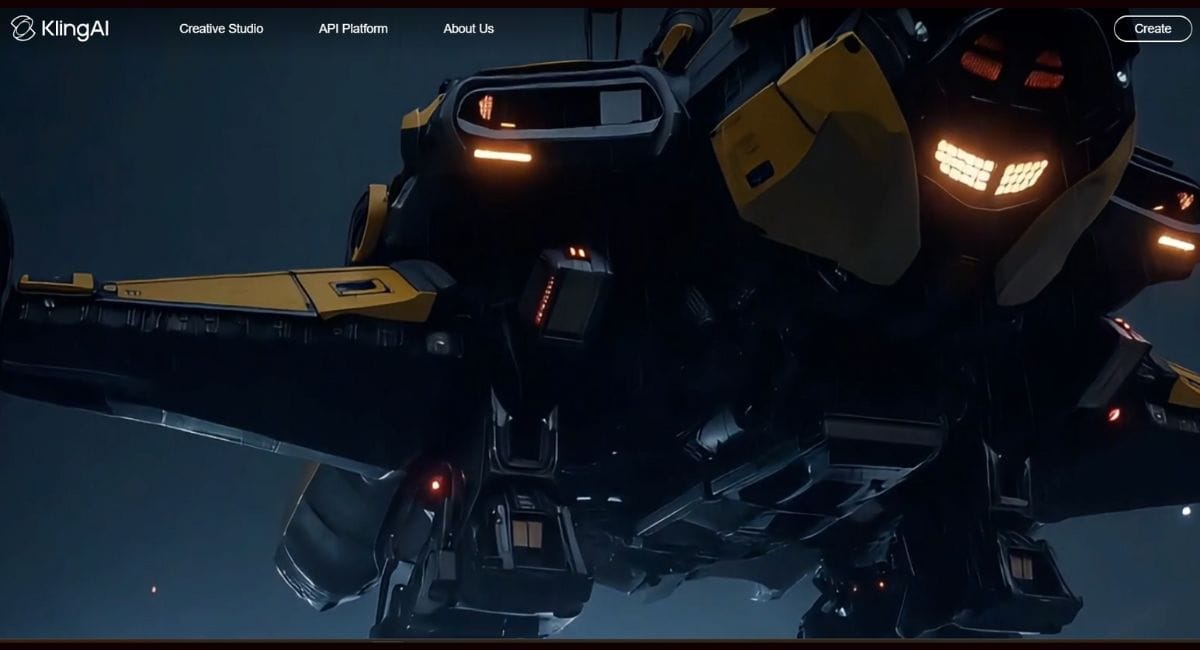
At its core, Kling AI is a powerful tool that creates short videos from text you type in. Think about that for a second. You write "a cat wearing sunglasses playing a guitar on a beach," and Kling AI tries to make a video of it. It was launched in June 2024 by a huge Chinese tech company called Kuaishou, which is a major competitor to TikTok's parent company. So, these guys know a thing or two about short videos.
The main goal of Kling AI is to make video creation easy for everyone—content creators, marketers, small business owners, you name it. You don't need to be a professional video editor to use it. The platform uses some seriously advanced AI, specifically something called a Diffusion Transformer (DiT) architecture, which is similar to what OpenAI's famous Sora model uses.
What makes Kling's technology special is its proprietary 3D spatio-temporal attention mechanism. That's a mouthful, I know. In simple terms, it means the AI thinks about the video in a 3D space over time. This helps it create incredibly realistic motion and physics. When a character walks, their feet usually land properly. When water flows, it looks like real water. This is what gives many of its videos that "cinematic" or "Hollywood-level" feel that people rave about.
Since its launch, Kling has been updated like crazy—over 20 times in its first year! They've rolled out versions like Kling 1.5, 1.6, and the big one, Kling 2.0, in April 2025, which was marketed as a "full-spectrum leap." This shows they're really committed to making the tool better and are listening to user feedback.
The Nitty-Gritty: Kling AI's Features
Kling isn't just a simple text-to-video machine. It's packed with features that give you a surprising amount of creative control. Let's break down the tools you'll be using.
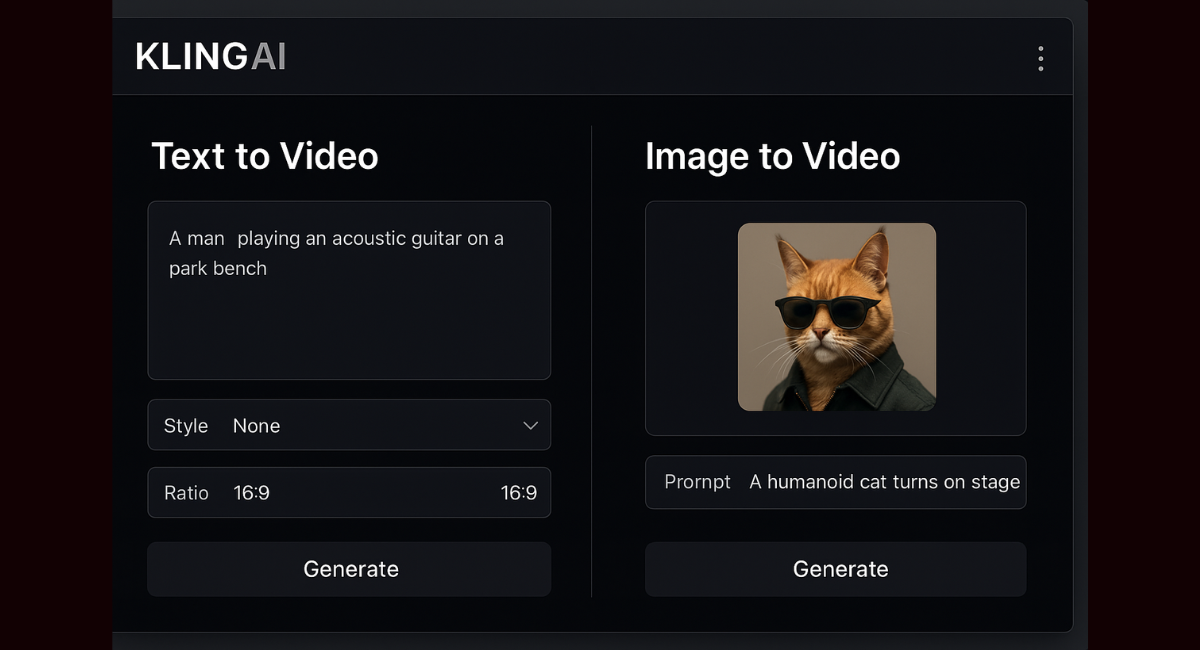
Core Generation Modes
- Text-to-Video: This is the bread and butter. You write a detailed prompt describing the scene, the subject, the action, the lighting, and even the camera movements you want. The more detailed you are, the better your result will be. This is where "prompt engineering" becomes a real skill.
- Image-to-Video: This is one of Kling's most powerful and popular features. You upload a starting image, and the AI brings it to life. Users say this often gives more predictable and higher-quality results because the AI has a strong visual reference for style and characters. This is perfect for animating brand logos or bringing a still piece of art to life.
Advanced Control Features

- Motion Brush: This is a game-changer. The Motion Brush lets you "paint" over specific parts of your source image to tell the AI exactly where you want the motion to happen. For example, you could have a picture of a calm lake surrounded by trees and use the brush to make only the water ripple, while everything else stays perfectly still. It gives you a level of control that many other tools lack.
- Lip Sync: This is another standout feature. You can upload audio or type in text, and Kling will make a character's face in an image animate with realistic lip movements synchronized to the sound. It even offers a selection of text-to-speech voices. This is huge for creating talking characters for social media or explainer videos.
- Camera Movement Control: You don't have to settle for a static shot. You can tell Kling to "pan left," "slowly zoom in," or use technical camera terms like "85mm lens with shallow depth of field" right in your prompt. This is crucial for getting that professional, cinematic look. However, some users have noted that the camera can sometimes be a bit too aggressive and move unexpectedly.
- Video Extension: Early versions of Kling were limited to very short clips, around 5 seconds. This was a major complaint. To fix this, they added a video extension feature. You can now extend a generated clip repeatedly to create longer sequences, with some reports saying you can get up to three minutes of video. This makes it much more useful for storytelling.
- Multi-Image Reference: A newer feature that's incredibly useful for character consistency. You can upload multiple pictures of the same person or object from different angles. Kling uses these references to keep the character looking the same across different scenes, avoiding that weird "face-morphing" issue that plagues many AI video tools.
These features position Kling AI as a powerful "shot generator." Many creators use it as part of a larger workflow. They might create a perfect image in a tool like Midjourney, bring it to life in Kling, and then assemble the final video in a traditional editor like Adobe Premiere Pro.
The Price Tag: Is It Free or Will It Drain Your Wallet?
Kling AI uses a freemium model, which is designed to get a lot of people in the door.
The Free Plan
When Kling first launched globally, it was pretty generous. You got free "Inspiration Credits" every single day—initially 66 credits, which was enough for about six standard videos. This was great for casual experimenting. More recently, this has been changed to a monthly credit allocation for international users (around 166 credits/month).
But here's the catch, and it's a big one. The free tier experience is deliberately limited. Free users are put into a low-priority queue, which can lead to ridiculously long generation times. We're talking hours, or even a full day, for a single 5-second clip. This is the primary way Kling pushes you to upgrade.
The Paid Plans
If you want to actually use Kling AI for any serious work, you'll need a paid plan. The plans give you more credits and, most importantly, access to "fast-track generation."
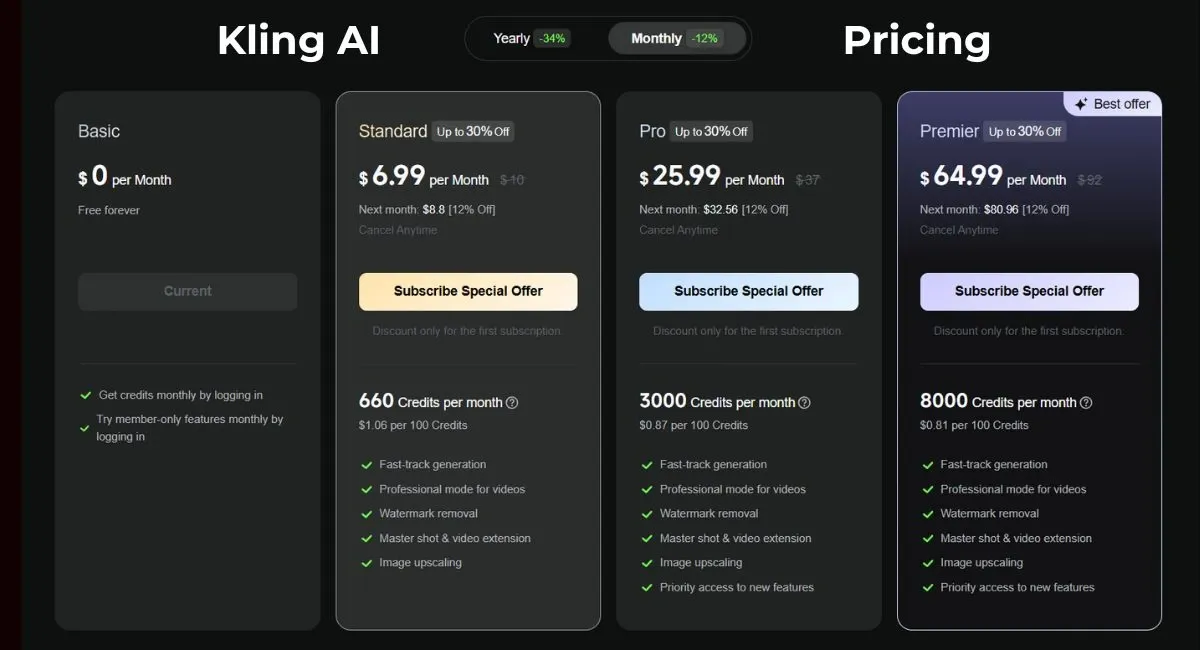
Here’s a general idea of the pricing, though it can vary:
- Standard Plan: Around $7 to $10 per month. This gets you a decent number of credits (e.g., 660) and removes the watermark. Good for hobbyists.
- Pro Plan: Around $37 per month. This gives you a lot more credits (e.g., 3,000) and is aimed at regular users.
- Premier Plan: Around $92 per month. This is for the power users, offering the highest number of credits (e.g., 8,000).
The Credit System Chaos
This is where a lot of user frustration comes from. The platform runs on Inspiration Credits, but the cost of a video isn't fixed. A simple, low-quality clip might cost 5-10 credits, but a high-quality video using advanced features or the latest model could cost 100 credits or more.
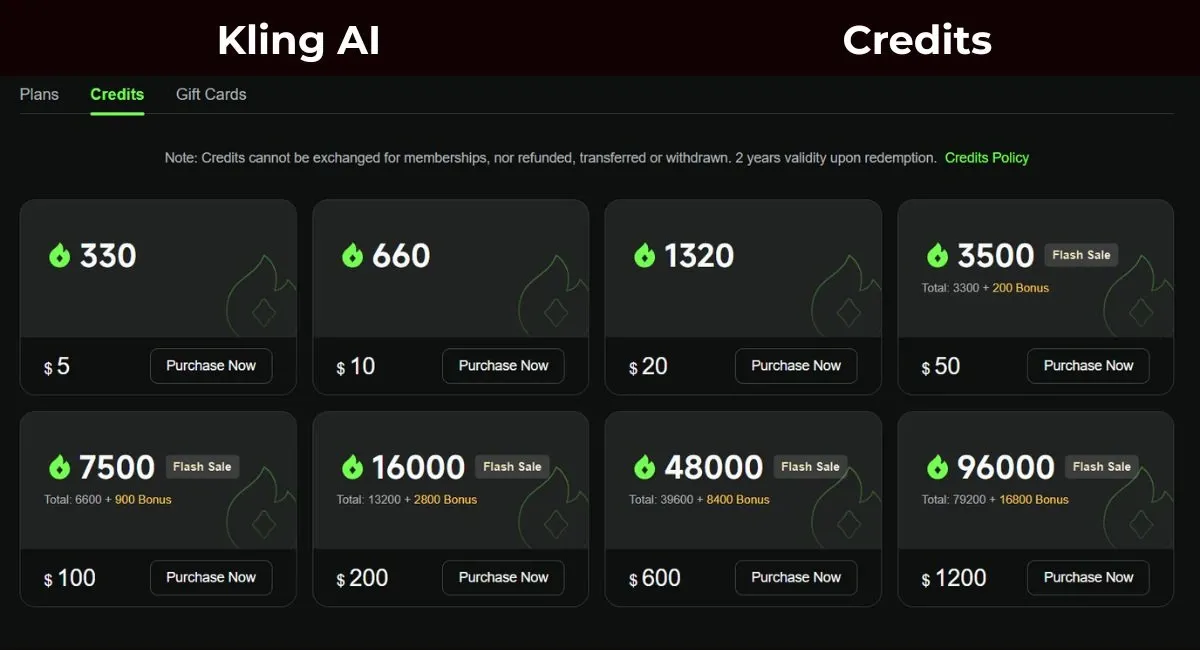
Here’s the problem that many users have reported:
- Failed Generations Consume Credits: One of the biggest complaints is that if a video generation fails or gets stuck at 99%, you still lose your credits. You've paid for something you never received.
- Unclear Subscription Practices: Many users on forums like Reddit and Trustpilot have complained about unclear subscription terms, unexpected recurring charges, and extreme difficulty in canceling. Some were charged again even after receiving a cancellation confirmation.
- Poor Customer Support: When these billing issues happen, users report that customer support is often unresponsive or unhelpful, leaving them to deal with credit card chargebacks.
This credit system has been described by some as a "rigged carnival game." The financial risk of the platform's own technical failures falls squarely on you, the user. This has created a lot of negative sentiment and is a major weakness for Kling AI.
The Good, The Bad, and The Glitchy: Real User Feedback
Kling AI is a tool of dualities. It can produce mind-blowing results, but it can also be incredibly frustrating.
The Good: Why People Are Excited
- Jaw-Dropping Quality: When Kling works, it really works. Users consistently praise the photorealistic and cinematic quality of the videos. The motion is smooth, the physics are believable, and the overall aesthetic is often described as superior to competitors like Runway.
- Incredible Motion and Physics: Thanks to its advanced 3D architecture, Kling excels at things like flowing water, waving cloth, and characters that move realistically without weird glitches or "stutter steps."
- Powerful Creative Tools: Features like the Motion Brush and multi-image reference for character consistency are huge draws for creators who want fine-grained control over their output. Many find it produces usable footage on the first or second try, especially with image-to-video.
The Bad: The Sources of Frustration
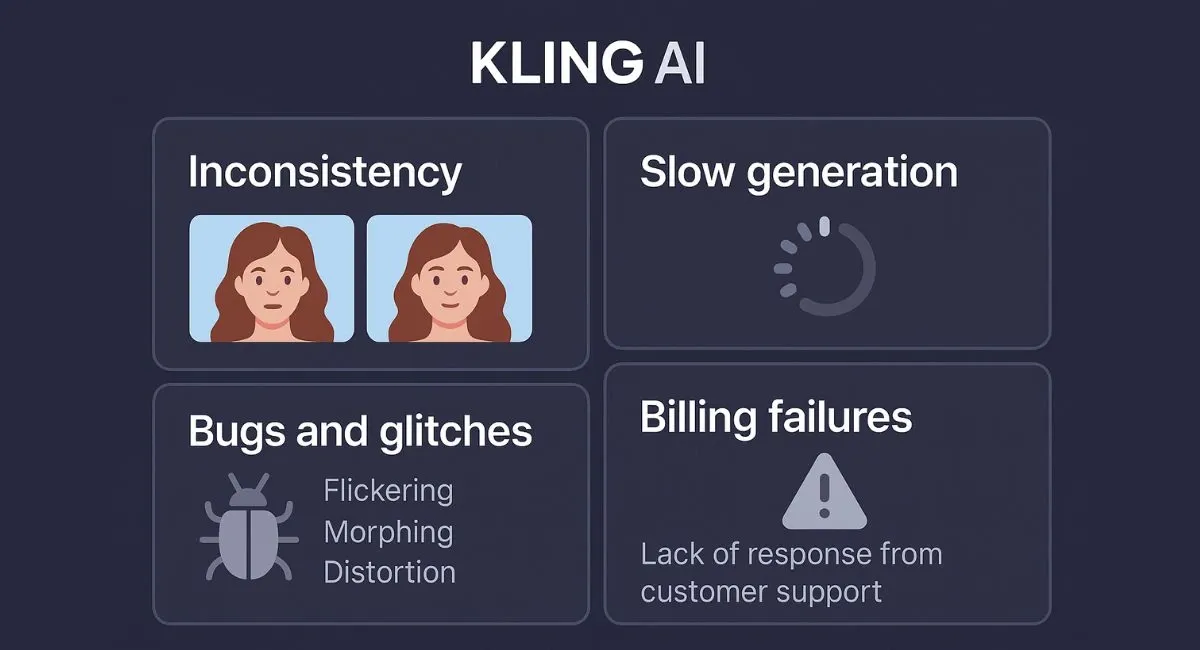
- Inconsistency is King: This is the biggest pain point. You can give the AI a perfect prompt, and it might just ignore parts of it. Users complain that it fails to follow simple instructions, like keeping a character's arms folded. This makes the creative process a game of trial and error, which wastes both time and expensive credits.
- Painfully Slow Generation: As mentioned, if you're on the free plan, be prepared to wait. But even paying users aren't immune to performance issues, like generations getting stuck at 99%.
- Bugs and Glitches: The outputs aren't always perfect. Users report common visual problems like flickering, unnatural morphing of objects, distorted faces and hands, and other random artifacts that ruin the video.
- Critical Support and Billing Failures: This is a huge red flag. There are multiple, detailed reports of accounts being compromised, credits being used by unauthorized generations, and a total lack of response from customer support. The difficulty in canceling subscriptions and getting refunds for services not rendered has severely damaged the company's reputation among some users.
How Does Kling Stack Up? (Kling vs. The World)
The AI video space is crowded. Here's how Kling is seen next to its main rivals, based on user reviews and comparisons.
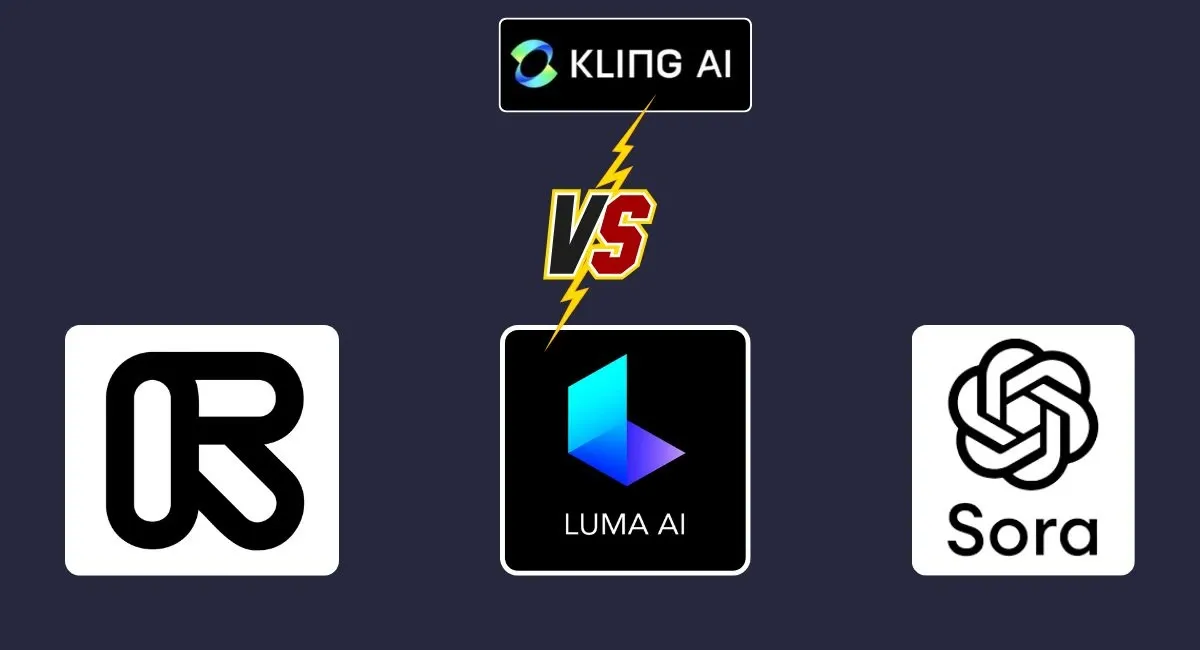
Kling AI vs. OpenAI's Sora
Sora is the industry's unicorn—everyone has seen the amazing demos, but almost no one can use it. Kling AI is often called the most powerful "Sora-like" tool available to the public. While Sora's demos suggest it can create longer, more coherent scenes, Kling's big advantage is that you can actually sign up and use it today. It's the practical choice for creators who want that level of quality now.
Kling AI vs. Runway
This is a central rivalry. In direct comparisons, many users find Kling's output to be "far superior" in motion realism and character animation than Runway's Gen-3 model. However, Runway's main advantages are its generation speed (especially its "Turbo mode") and its unlimited generation plan for high-tier users, which is a huge plus for professionals tired of credit-based systems. Runway is often seen as a more mature, all-in-one creative suite, while Kling is viewed as a more powerful, if less reliable, specialized animation engine.
Kling AI vs. Luma Dream Machine
Luma is another top-tier competitor praised for its cinematic quality. Some users prefer Luma's aesthetic in head-to-head tests. However, Kling generally has a more generous free tier and a more robust feature set, with tools like the Motion Brush offering greater control.
A Quick Comparison
| Feature | Kling AI ↗ | Runway | Luma | VideoExpress ↗ | Syllaby ↗ | Invideo ↗ |
|---|---|---|---|---|---|---|
| Resolution | 1080p | 4K | 720p | 4K | 1080p | 4K |
| Length | 5-10s | 10-16s | 10-30s | 15+ min | 10 min | 60+ min |
| Strength | Motion | Speed | Cinematic | Templates | Strategy | Scripting |
| Free Tier | Credits | Limited | Limited | Exports | Basic | Watermark |
Hype, Controversy, and Final Thoughts
There's no doubt that Kling AI has generated a ton of hype, especially with its rapid updates and impressive showcases. Kuaishou is running aggressive marketing campaigns, even displaying user-generated videos on billboards in Times Square, to build a massive community.
However, the platform isn't without controversy.
- Censorship: Being a product of a Chinese company, Kling AI actively censors prompts on politically sensitive topics. Prompts about "Democracy in China" or "Tiananmen Square protests" will trigger an error. This is a significant limitation for global users who value free expression.
- Business Practices: The biggest controversy remains the user complaints about its billing system, credit consumption, and non-existent customer support, which has led some to label the service a "scam."
So, Is Kling AI Worth It?
Kling AI is a paradox. It's a technologically brilliant tool that offers some of the best motion realism and video quality on the publicly accessible market. When it works, the results can be truly spectacular.
However, its incredible potential is severely held back by its operational flaws. The platform's inconsistency, slow speeds for free users, and, most importantly, the deeply problematic billing and support systems make it a risky bet for professional or business use. The feeling that you could lose money on a failed generation without any recourse is a major deterrent.
My advice? Absolutely give the free tier a try. It's the only way to see the magic for yourself. Play with the features, see what it's capable of, and experience the generation process. But I would be very cautious about subscribing to a paid plan until there is clear evidence that the company has addressed the widespread and serious complaints about its customer support and billing practices.
Kling AI has the technology to be a market leader, but it needs to prove it can be a trustworthy and reliable service provider first.
